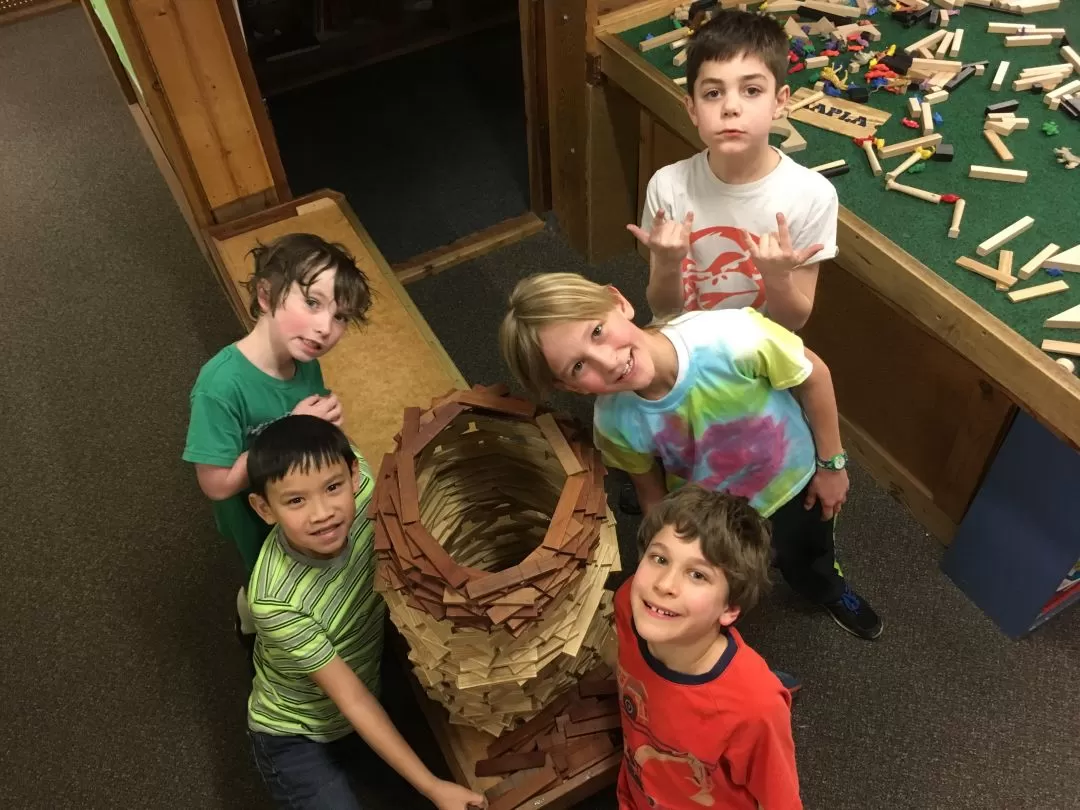As students come down the stairs to Bixby’s lower level, they are entering a space especially designed for kids. There are the lofts, the reading area, ‘the island,’ which houses art supplies, but the most captivating part seems to be the building table. Before group time in the morning, during free time, or the rare inside recess, kids congregate around the building table. The materials change every month or two from Legos, to magnetic wooden blocks, to K’nex, to Kapla Blocks, to marble mazes, to architectural blocks, etc. I marvel at the creative, intricate play that students invent. This is a place where children design buildings and toys, create new worlds, and work with their friends as they negotiate for materials and space.

Sometimes houses, farms, and cities spring up from the building table; these settings then become the backdrops for creative play. As families of cats move in, or all of a certain type of block is designated as ‘cheese’ or ‘gold,’ students create their own narratives, playing off each other to create more and more complex stories to act out through their play at the building table.
As students work with each other, they explain their thinking and what they are trying to achieve. They design games that they can play with the building materials, while they try to stay within the school rules. Since no building materials may fly through the air, the many ideas involving catapults must be scratched. Students need to be able to let others learn for themselves and ask before offering help, and of course they need to share limited supplies of certain blocks. There are so many social skills that students practice in order to keep the play going and to keep the building table fun for everyone.
Lots of research has been done on the value of block play showing benefits for children that include the development of classification ability, social skills, imagination, language, mathematical achievement, spatial reasoning, and lots more (Tepylo, Moss, Stephenson, 2015). At Bixby, the building table provides children with choices in their learning and a place to practice and build on knowledge learned in many of their classes, but most of all it’s a place where kids have a lot of fun playing together.



